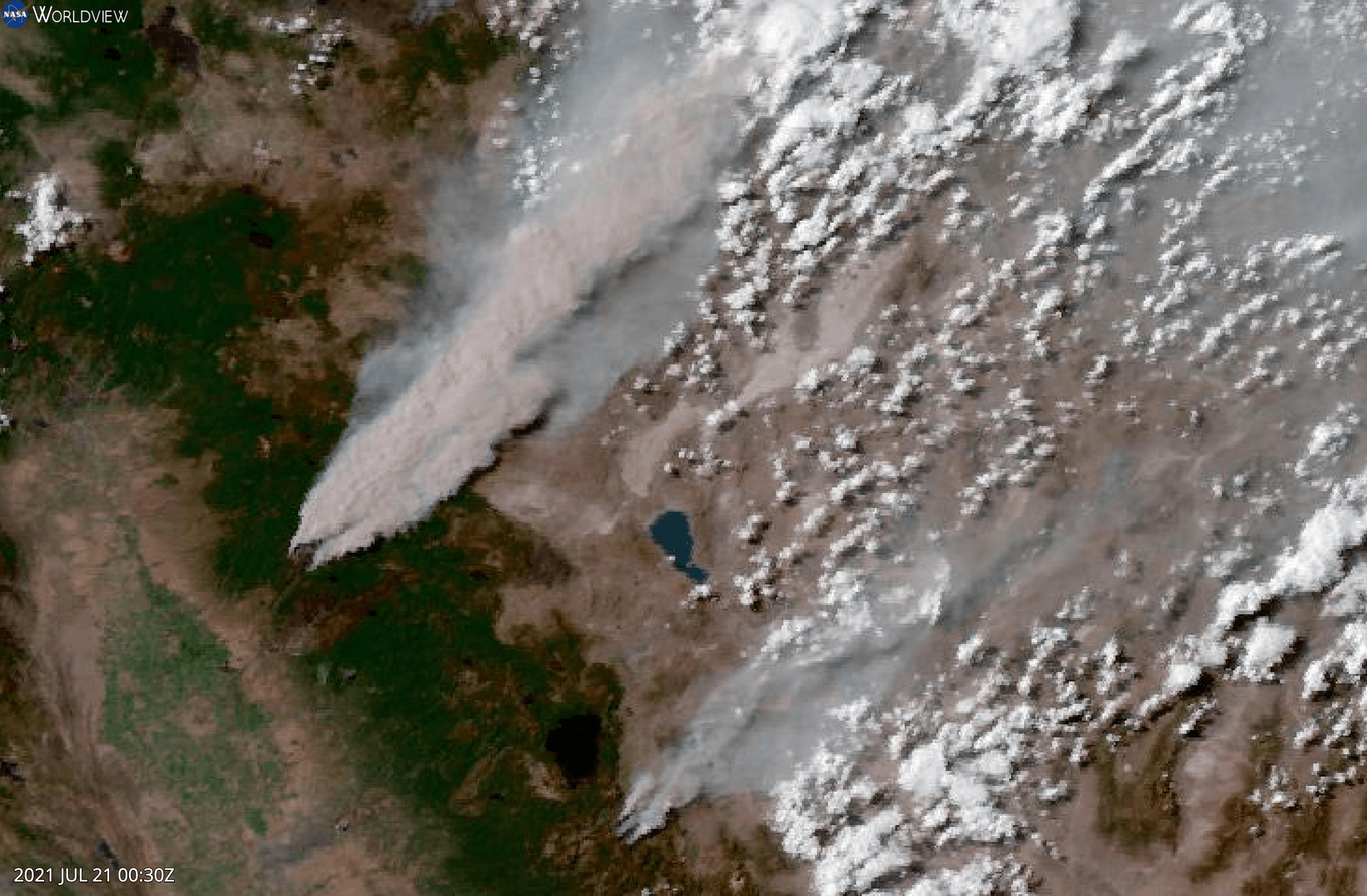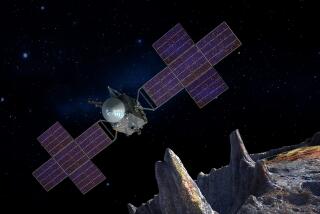The dark side of space about to be illuminated
One might think that after centuries of scanning the night skies, mankind would have a pretty clear idea of who our galactic neighbors are, and whether they mean us harm.
Thatâs not the case. Vast landscapes of the cosmos remain hidden to us because most of our telescopes plumb the heavens for light that can be seen by the human eye -- and that constitutes only a narrow band of the electromagnetic spectrum.
âThink of a wall map,â said Edward Wright, an astronomy professor at UCLA.The map may show the whole world, âbut I canât figure out from it where the national parks are. If I have an atlas with a much more detailed view, I can plan my vacation.â
Making a better atlas is what Wright and his colleagues hope to do with NASAâs Wide-field Infrared Survey Explorer, or WISE, space mission. Scheduled to launch Friday from Vandenberg Air Force Base in California, the $320-million spacecraft will photograph the entire night sky in infrared light. In the process, it will capture hundreds of thousands of previously unknown objects that are too cool and too dark to light up our nighttime sky.
Like alleyway skulkers with hats pulled low over their eyes, these objects have been lurking around space for millions of years, yet hidden from view. These denizens of the dark are likely to include tens of thousands of asteroids between Mars and Jupiter -- some of which could turn out to be an eventual threat to Earth; dozens of failed stars known as brown dwarfs; possibly even a giant planet out beyond Pluto.
Scientists say WISE could revise the familiar portrait of our solar system.
âWhat weâre doing with WISE is opening up the sky in a way that hasnât been possible before. It will transform the picture of our solar neighborhood,â said Peter Eisenhardt, a scientist at the Jet Propulsion Laboratory in La CaĂąada Flintridge, where the mission is managed. âIt will give scientists things to study for decades.â
Steinn Sigurdsson, an astronomer at Pennsylvania State University who is not affiliated with the mission, agrees that WISE offers âconsiderable prospects for significant discoveries.â
Itâs even possible, he says, that the mission could find planets around other stars.
Of course, this isnât the first time anyone has thought of scanning the sky in wavelengths other than the narrow region of visible light. Radio telescopes like the Arecibo instrument in Puerto Rico search deep space for the long radio waves emitted by many galaxies. Other instruments try to capture the intensely short and dangerous gamma rays released by exploding stars.
But some things, such as the process in which stars form from balls of hard-to-see interstellar gas, are much easier to study in the infrared, which can pick up very dim and relatively cool objects.
âFrom my perspective, this is an incredibly exciting mission,â said Andrea Ghez, an astronomy professor at UCLA who is not part of the WISE team.
The forerunner to WISE was NASAâs Infrared Astronomical Satellite. Launched in 1983, it probed the entire sky in the infrared, increasing the number of cataloged astronomical objects by a staggering 70%. It detected 350,000 new objects, including comets and wisps of invisible but warm dust clouds in almost every direction of space.
But by using just 62 pixels to measure the heavens, that satellite was a dim flashlight compared to WISE.
Each of WISEâs four detectors will scan space with 1 million pixels, making the suite of instruments thousands of times more sensitive.
After being launched by a Delta II rocket, WISE will settle into orbit about 326 miles above the Earthâs surface. The heart of the 9-foot-tall spacecraft is a 16-inch-diameter telescope housed in a shroud of solid, frozen hydrogen called a cryostat. This floating ice chest is designed to keep the instruments so cold -- as low as minus 445 degrees Fahrenheit -- that the four detectors will not accidentally pick up heat from the missionâs own electronics.
The first class of objects likely to pop out of hiding is a type of failed star called a brown dwarf. Brown dwarfs didnât possess the sheer bulk necessary to sustain the nuclear fusion reaction that causes stars like our sun to burst into flames after collapsing from a ball of gas.
Brown dwarfs donât shine, except in the infrared. Their temperatures, ranging from a downright icy minus 330 degrees to 1,300 degrees, are remnants of the heat generated by their gravitational collapse.
According to Eisenhardt, many scientists believe there are as many brown dwarfs in any region of space as regular stars. Within 25 light-years of the sun, there are about 100 known stars, only six of which are brown dwarfs. That means there could be another 90 or so brown dwarfs in that area awaiting discovery.
There is an even chance, Wright said, that one might be closer than the conventional star Proxima Centauri. Four light-years away, Proxima holds the record for our closest starry neighbor.
âThat would be a very exciting discovery,â Eisenhardt said.
Within our solar system, WISE will probably uncover as many as 100,000 new asteroids in the rocky junk pile between Mars and Jupiter. The several hundred thousand asteroids we know now consist mostly of those with surfaces that reflect light well.
Further, the conventional way to measure an asteroid, Wright said, is to equate its size with its brightness. But some things just donât reflect as well as others, regardless of size. Because WISE will see temperature differences, it will provide a much better tool for judging size, Eisenhardt said.
That doesnât mean the spacecraft will find a âdoomsday asteroidâ that poses a threat to Earth. What it does mean is that the mission will help scientists judge the size of any threatening asteroid, giving greater advance warning about the ones that could be the next weapon of extinction, like the one suspected of wiping out the dinosaurs.
Finally, Eisenhardt and other members of the WISE team think there is a decent possibility of finding a new planet on the fringes of our solar system.
The solar systemâs Wild West is the Kuiper Belt, where thousands of icy bodies roam, including Pluto, the former ninth planet in our solar system that lost its status when the International Astronomical Union decided several years ago that it was too small to be a planet. Beyond that is the Oort Cloud, the home of lots of comets that occasionally wander into the inner solar system.
âWe know stuff is out there,â Eisenhardt said. âItâs possible there could be a planet larger than Jupiter.â
Roger Launius, a space expert at the Smithsonian Institution in Washington, D.C., was skeptical of that kind of speculation. âThereâs no theoretical work that suggests thereâs a big planet out there,â he said.
Still, though Launius admits to bouts of cynicism in the face of NASA âballyhooingâ its missions, he said this one could yield important findings. âThis is part of the electromagnetic spectrum where we havenât done that much.â
More to Read
Sign up for Essential California
The most important California stories and recommendations in your inbox every morning.
You may occasionally receive promotional content from the Los Angeles Times.








